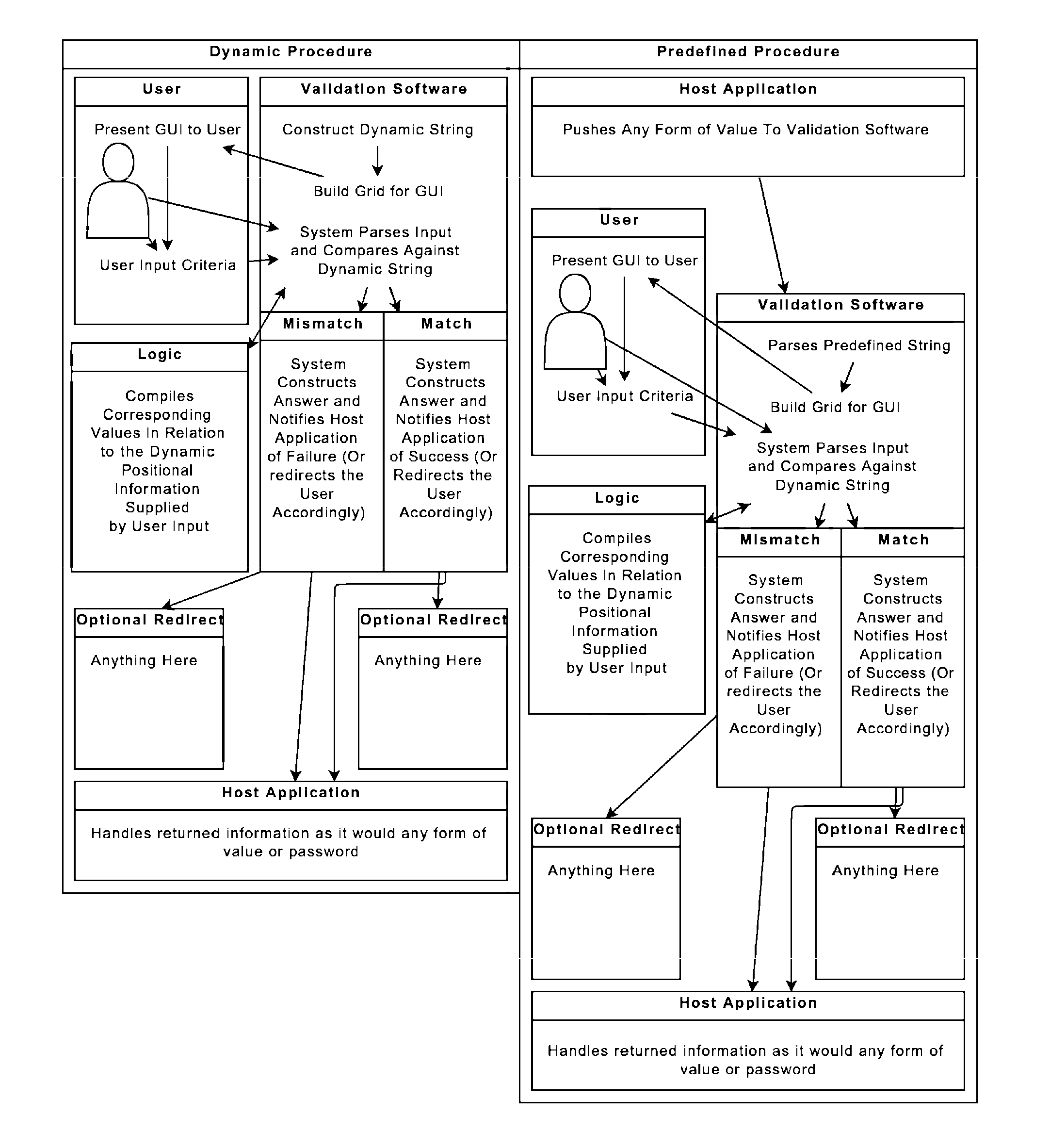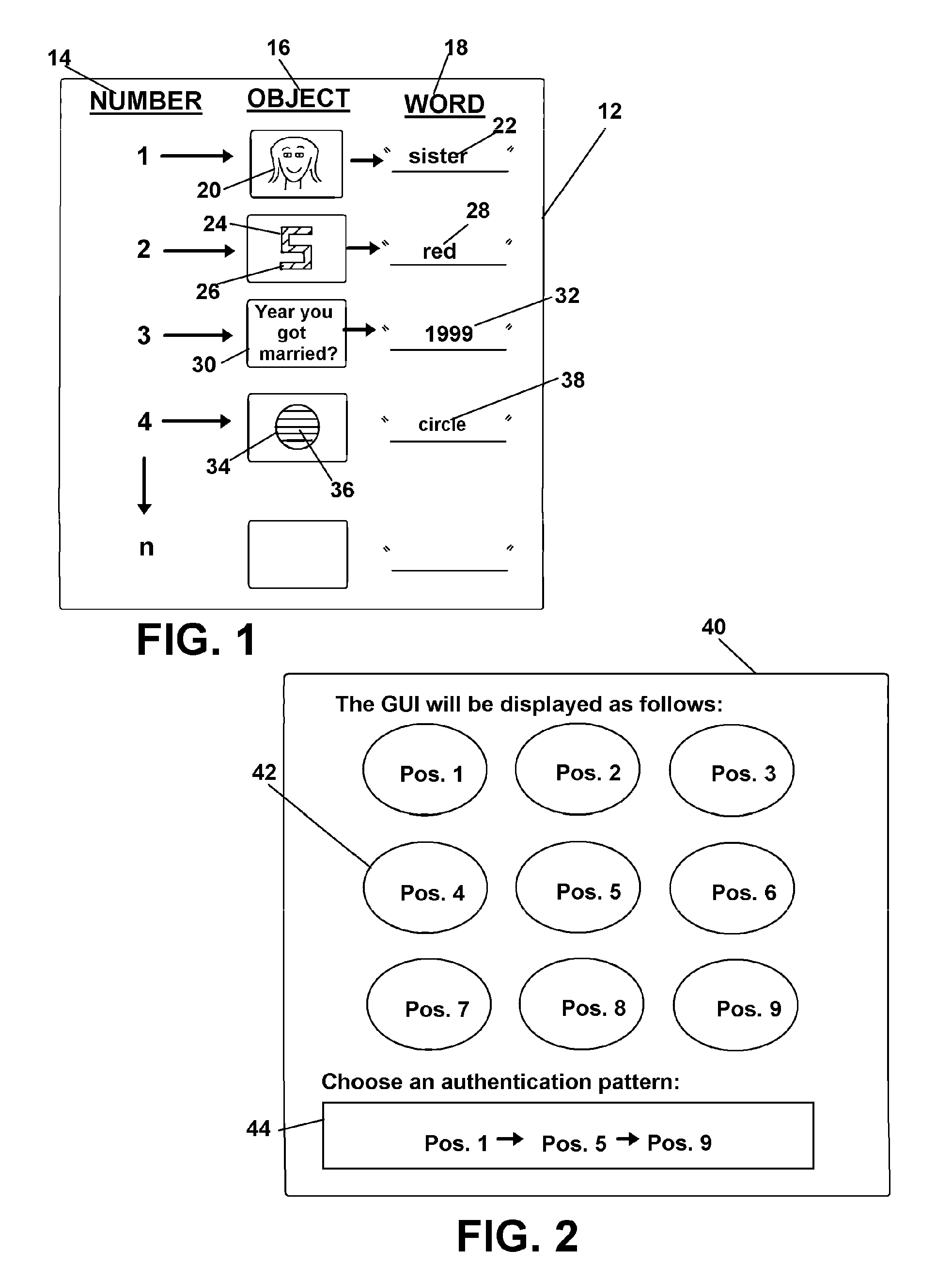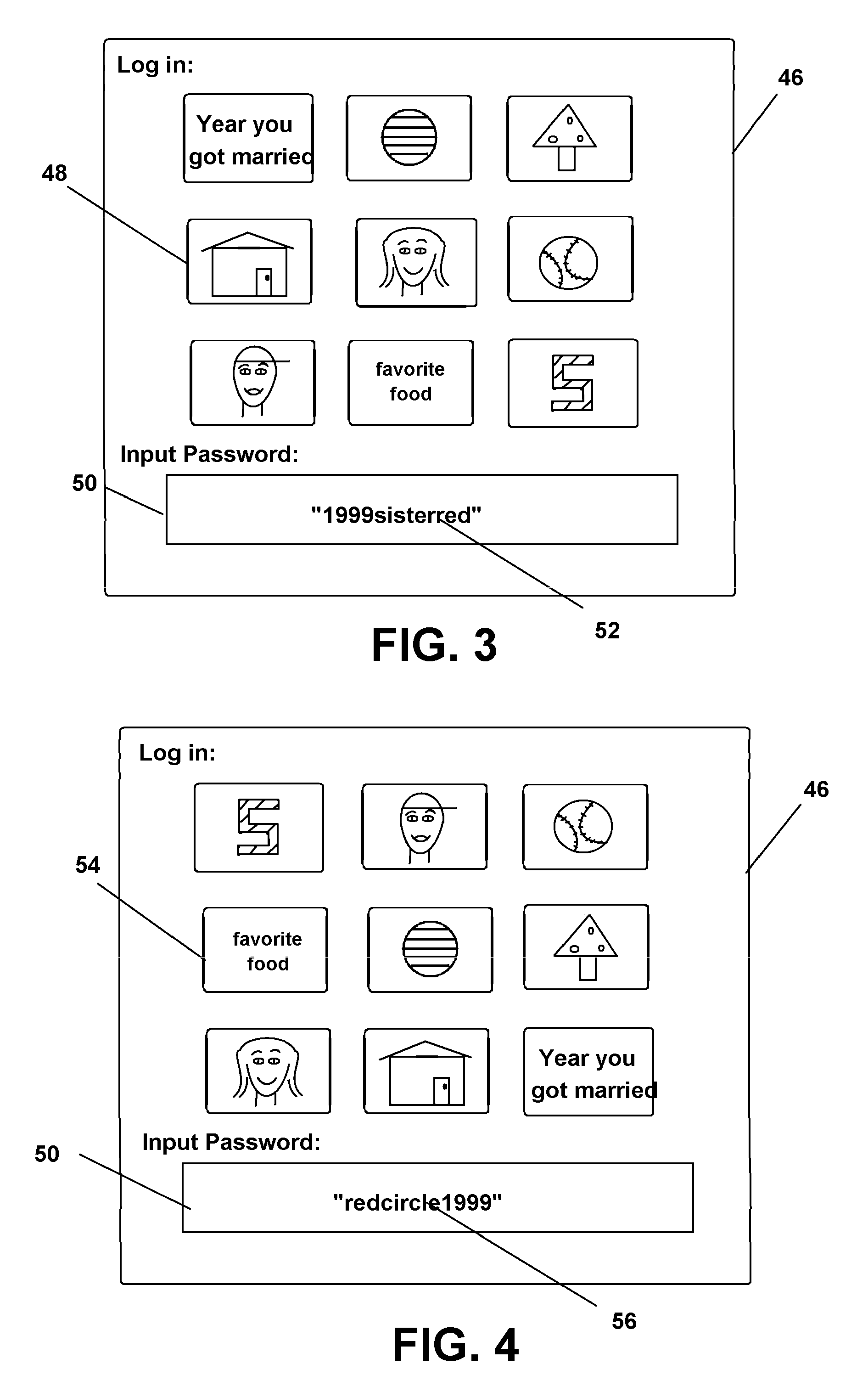Method for producing dynamic data structures for authentication and/or password identification
a dynamic data and authentication technology, applied in the field of information technology, can solve the problems of user difficulty in remembering passwords, many pitfalls, and limited password protection conventionally, and achieve the effects of increasing the complexity of the system and therefor the difficulty of a hacker to determine passwords, increasing the total number of objects stored in the group of users, and easy recall
- Summary
- Abstract
- Description
- Claims
- Application Information
AI Technical Summary
Benefits of technology
Problems solved by technology
Method used
Image
Examples
Embodiment Construction
[0054]The method and system employing software running on a computing device or a server adapted at the task and having input components, visual display components, and network communication components adapted to the task, provides a means for creating a dynamic data structure or ‘word strings’ matched to displayed familiar objects or projected sounds personalized to users which are employable to generate an authentication or password identification string for transmission in a login during individual sessions of use. The method is especially well suited for employment for access control to personal computers, cell phones, smart phones, networks, websites, and other computing or smart devices which may also operate across a network where a user can conventionally ‘log in’ prior to gaining access thereto, in a fashion able to protect personal information.
[0055]Briefly, the dynamic structure of the correct authentication string, or password, for input to a computing device or server, ...
PUM
 Login to View More
Login to View More Abstract
Description
Claims
Application Information
 Login to View More
Login to View More - R&D
- Intellectual Property
- Life Sciences
- Materials
- Tech Scout
- Unparalleled Data Quality
- Higher Quality Content
- 60% Fewer Hallucinations
Browse by: Latest US Patents, China's latest patents, Technical Efficacy Thesaurus, Application Domain, Technology Topic, Popular Technical Reports.
© 2025 PatSnap. All rights reserved.Legal|Privacy policy|Modern Slavery Act Transparency Statement|Sitemap|About US| Contact US: help@patsnap.com



